How much does it cost to create an app in 2023? A detailed guide
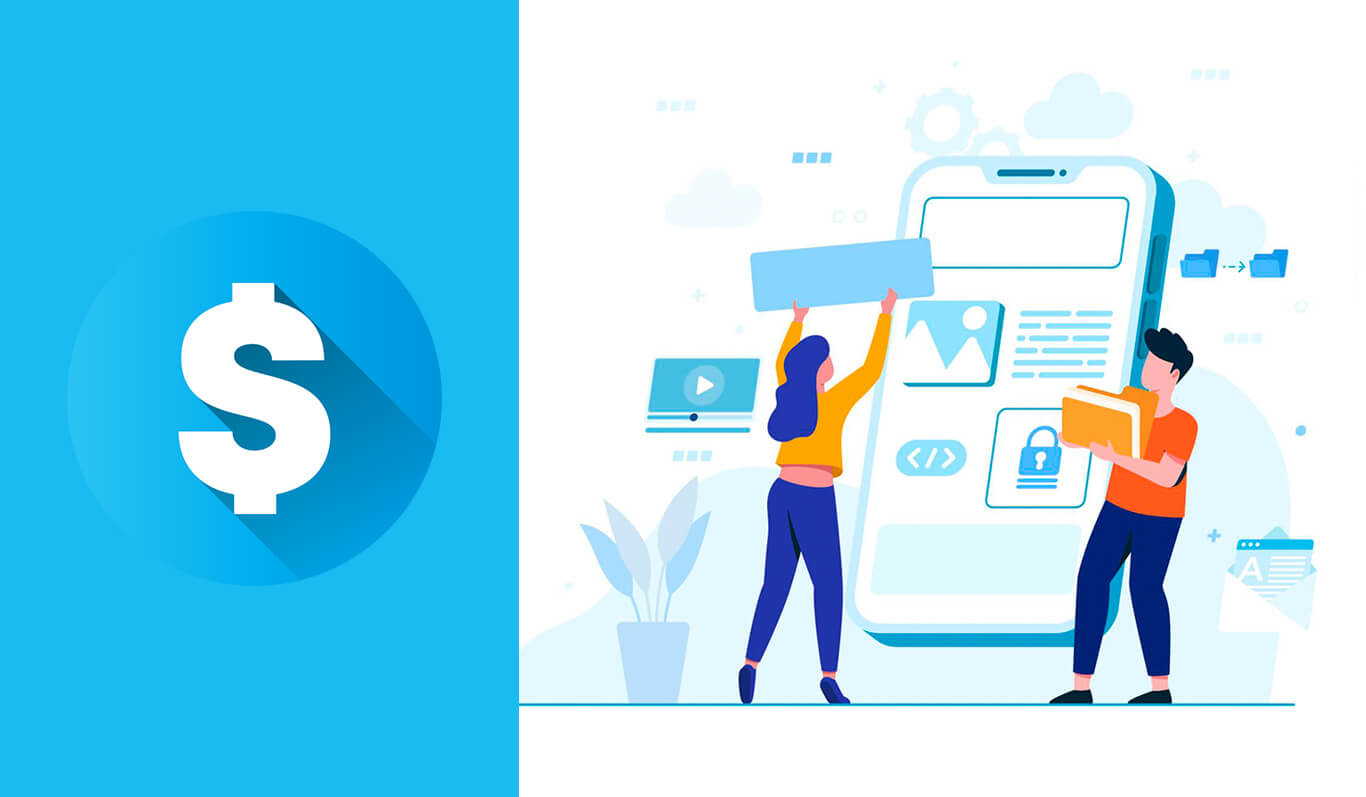
Making an app is a complicated business and figuring out its cost is certainly a challenge. There are numerous factors that impacts the development cost of an application. The average app development cost in India will be:
- Basic app development cost – $12,500 to $20,000
- Medium complexity app development cost – $20,000 to $30,000
- Complex app development cost – from $32,500
In this article, we have discussed the different aspects of calculating the app development cost such as the factors that influence the app cost, etc. This guide will offer you information about calculating the cost of making an app in detail.
Interested to know more? Read on.
What factors affect app development price?
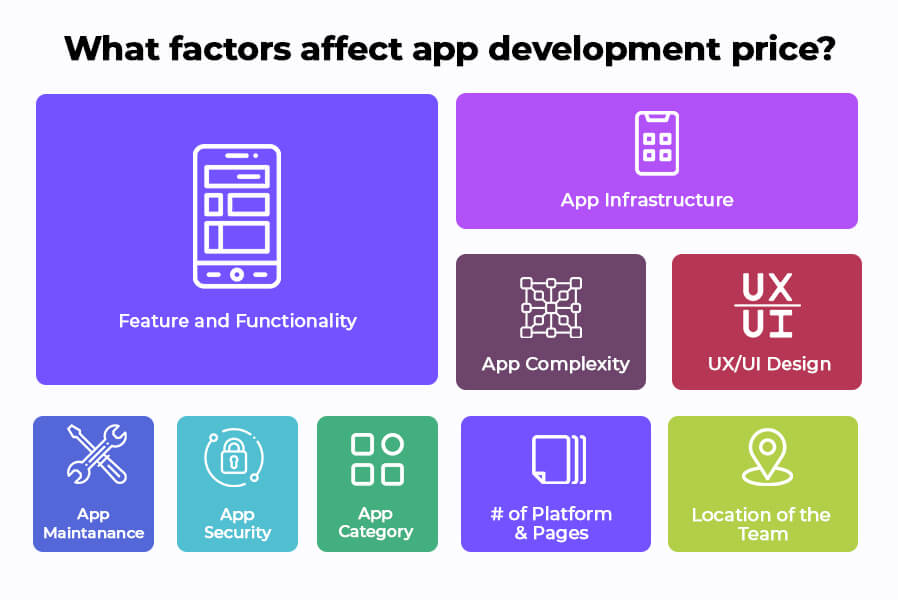
There are multiple factors that affect the development cost of an application. These include:
- The complexity of the app and its features
- Development approach (native, cross-platform, hybrid)
- The number of platforms (iOS, Android, etc.)
- Type and location of development partner
Let us look at these factors in detail.
How to estimate app cost based on features and complexity?
Getting a more accurate picture of your app development cost requires estimating how many features are going to be implemented in your app since this will have the largest impact on the development hours. The cost of developing complex features is higher than developing basic features.
Make a list of the features you want to include while keeping in mind the long-term business goals and deciding on what is most beneficial to your target audience.
Read more: How much does it cost to maintain an app in 2022
What basic features to implement?
User profile
A user's profile determines how an app is customized. It is also possible to provide access to site log-ins through email or phone, but users are more likely to sign up using social media accounts like Facebook or Twitter.
Navigation
User navigation defines how users move through the app and what they do within it. A user interface architecture includes scrolling, swiping, icons, menus, and switching between screens.
Chat
In-app messaging applications have become standard features for many apps today. There are several features available, including file transfer, saving or auto-deleting messages, history, offline mode, notifications, emojis, etc. Integration of chat SDKs from the open market is more common these days. Despite the additional cost, it is still much less expensive than developing a custom chat module.
Search
Allows users to quickly find information within the app. Depending on how the index is crafted and how it is indexed, time and cost are highly variable. You also have to decide if you want features like predictive search, filtered search, etc.
Push notification
In today's apps, push notifications are a necessity for interacting with users, updating them with real-time information, and engaging them.
Which complex features are to be included in your app?
Payment integration
Apps like e-commerce apps or stock apps must have the ability to accept payments. You can integrate payment systems like Google Wallet, Apple Pay, PayPal, or credit cards directly through a payment gateway API, to provide multiple payment options.
Geolocation/GPS tracking
Food delivery apps, transportation, travel apps, dating apps, business apps, and locating user devices all need geolocation to operate. Using GPS and real-time permissions, it tracks users.
Video or audio streaming
It is used in apps like Hotstar, Amazon prime, and others that offer on-demand content. App logic, file format, server setting, processing speed, and other settings will determine when and how much it will cost to develop.
Analytics
The analysis of user activity can shed light on app performance or user pain points, which can help make the app more user-friendly. To enable this feature on the app, it can be integrated with third-party services like Google Analytics to improve user experience and engagement.
Data encryption
Security is of the utmost importance, especially with the level of digitization that is occurring now across different domains. A high level of security is essential for all apps that protect private data, and messaging, and prevent unauthorized access. Whether the encrypted data is text, image, audio, or video will affect the time and cost to implement this feature.
Connectivity
A device's in-built features will often be required to ensure compatibility with an app. Apps may require access to Bluetooth, video calls, sensors, etc. Adding these features will incur additional costs.
Multi-language support
Multilingual support is necessary for apps that cater to users from more than one country. By doing so, user engagement can be expanded.
You can prioritize your features to suit your budget and then improve them based on user feedback after launching. A project's requirements can change unexpectedly during development. Therefore, it is better to emphasize the most important aspects first.
What are the different types of apps available?
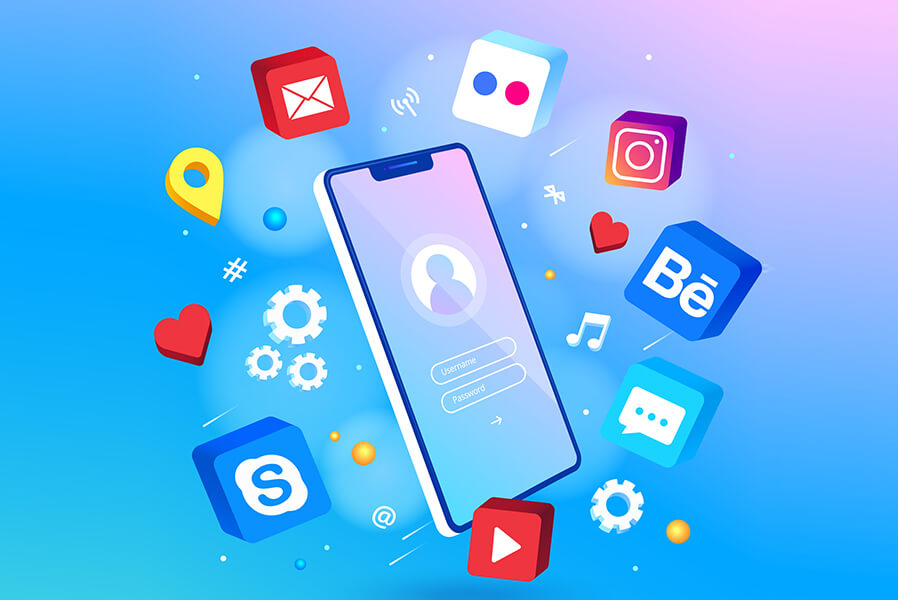
Based on the logic, function, and purpose an app serves, there are different types of apps. The type of app determines the features that will need to be included in the app, help to decide whether to spend more on the visual aspect of the application, and also what app marketing strategies to be implemented. For instance, the design specifications, functionality, marketing requirements, etc for an education app will be different from that of a gaming app.
Most applications fall under 6 common categories which are:
- Educational apps
- Lifestyle apps
- Social media apps
- Productivity apps
- Entertainment apps, and
- Gaming apps
Educational apps
These apps are data-driven apps. Ideally, a data-driven app should operate using multiple sources of data, both internal and external. These applications should enable functionalities to provide robust performance and a user-friendly interface and should be scalable to improve performance. For example, weather apps, news apps, etc.
Lifestyle apps
Lifestyle apps are intended to make life easier for a user and address a specific problem that a user is experiencing. For example, Healthify is a lifestyle app that allows a user to keep track of their health parameters, adhere to a healthy lifestyle, and so on. Lifestyle apps may require social media integration, in-app calling and messaging, video streaming, AI, etc, depending on the service it provides.
Social media apps
Social media apps allow users to connect and interact with people all over the world. These apps should provide the functionality required to support live video streaming, share and access images, communicate with connections, analytics to improve app performance, and more.
Productivity apps
Commonly used by businesses, productivity apps help to improve individual efficiency as well as that of a group. For instance, the Trello app. It provides an understandable, easy-to-use interface that allows anyone to install and use the application. Such apps improve collaboration in workplaces and make scheduling and delegating tasks easier. Productivity apps should have an intuitive user interface to improve user experience.
Entertainment apps
Entertainment apps exist for the sole purpose of entertainment. These apps should have functionalities that ensure the content is accessible from anywhere. Entertainment apps like Netflix, and Hotstar provides live streaming of videos, download option to watch videos offline, multi-lingual support, and more.
Game apps
The range of game apps available today caters to all kinds of target audiences. They include arcade games, fantasy games and even silly games like angry birds. The games people play on mobile apps vary. Some are played individually and some in-person with online friends. Game apps should provide a simple and intuitive user interface, stable performance, fast loading time, customer support, and device compatibility to provide the best user experience.
Should you develop an app for Android or iOS?
When considering developing a native app, you can choose to develop it either for Android or iOS. What platform you choose to build on is a significant factor in determining the app development cost.
Factors that help determine the development platform
The factors that will help you to decide whether you want to develop your app on Android or iOS are:
- Revenue generated
- Target audience
- Post-maintenance support
- Features
- User location
Let us look at these in detail.
Revenue
Android has a higher market share than iOS. On the other hand, iOS users are more willing to make in-app purchases as compared to Android users. And, iOS users have a higher lifetime value. Revenue generated will be more in the case of iOS apps.
Target audience
Identifying your target audience can help you plan the features to be included in your app. A study shows that developers who are targeting a technical or medical audience may be more successful in developing apps for Android. Business professionals, managers, and salespeople are more likely to own an iPhone.
Post-maintenance support
Many Android users still use older versions of the operating system. Several Android devices still run outdated versions of Android, resulting in crashes and unexpected bugs when newly downloaded apps are tried. Since iPhone users experience less of this problem, iOS app maintenance is generally less costly than software for Android devices.
Features
Android is an open operating system. As developers, this means access to hardware and features that Apple does not permit. Furthermore, Android allows for enhanced customization of features.
User location
It may be more profitable for you to develop iOS apps for western countries if your target audience is based there. Android has a larger user base and better global coverage. It appeals primarily to users in Latin America, Africa, Asia, and some parts of Europe.
What are the different mobile app development approaches?
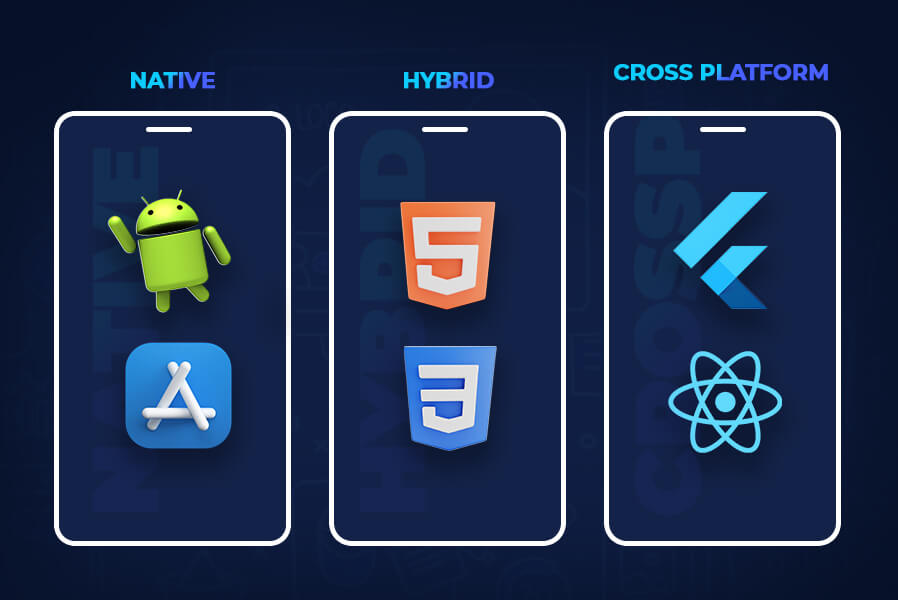
Ideally, a mobile development approach can be said to be most effective when it addresses all your needs, simplifies the development process, and consequently reduces the development cost. There are mainly four different development approaches which are:
- Cross-platform apps
- Native apps
- Hybrid apps
- PWAs
Cross-platform
Cross-platform mobile applications can run on multiple platforms. Compared to native development, cross-platform is a viable alternative for startups and small businesses because it avoids the challenge of creating an app for every mobile platform. As a result, this concept allows apps to be delivered across multiple platforms faster and simultaneously, using languages and tools different from native tools.
- Single codebase
- Low development cost
- Easy to implement
- Reusable source code
- Wider audience reach
- Faster time to market
Native apps
A native app is built using OS-specific programming languages, development environments, and software development kits. For instance, if you are building an iOS and Android app, each app will be built using different technology stacks.
- High performance
- Platform-specific UI
- OS compatibility
- Complete access to hardware features
- Secure, responsive, and reliable
Hybrid apps
These apps combine the features of native apps and cross-platform apps. The application core is developed with web-standard technologies like JavaScript, CSS, and HTML5, and then executed within a native shell. In a hybrid development approach, apps exhibit high performance and enable enhanced user experiences similar to that of native mobile apps.
- Faster time to market
- Single development team
- Reusable code
- Native-like user experience
- Low development cost
- Offline mode support
PWAs
A PWA is not a mobile app, but it looks and performs similar to one. They are web applications specifically designed to provide an intuitive user experience for their users. The user does not need to download the application. The use of progressive web apps does not require a browser and can be installed directly on a mobile or desktop.
Advantages of Progressive Web Apps
- Easy to maintain
- Single codebase
- Mobile-friendly UI
- Does not require a download
- Supports offline mode
Does choosing your development partner influence app cost?
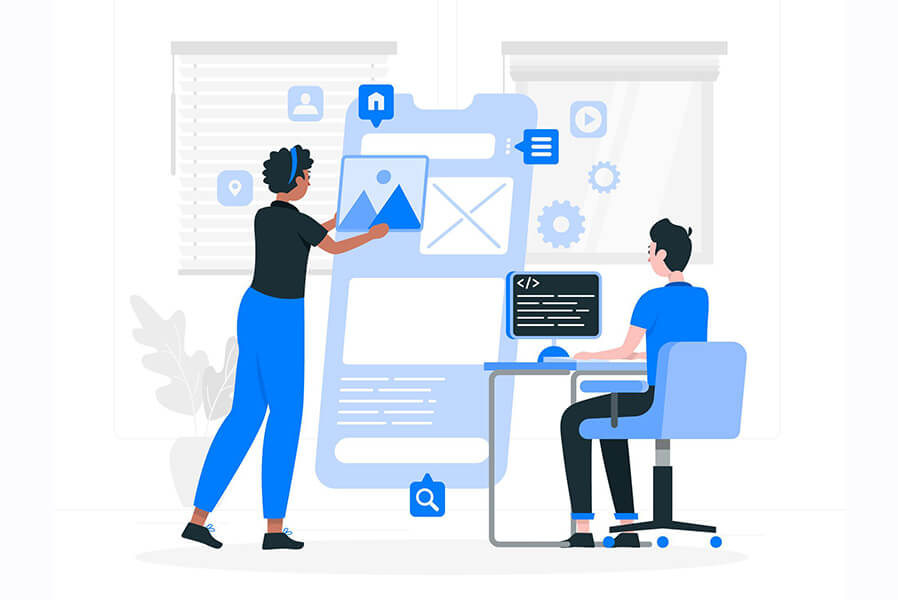
The cost of app development is also influenced by the type and location of the development agency, as well as the size of the project. Development firms can be classified into three categories: small independent businesses, specialist organizations, and large development firms.
It is common for small firms to be made up of freelancers who can create basic applications. However, they lack deep technical knowledge when it comes to developing complex solutions to problems. As a result, they offer cheap mobile app development costs.
Dedicated software development companies will walk you through your project from start to finish. They are experts in software development and will assist you throughout the entire process. You will most likely get a better result with their services, although they will usually charge more compared to small companies.
Finally, the more established development agencies will deliver a quality product due to their experience and expertise in a wide range of services. In contrast, they usually lack a personalized approach to app development, are less flexible, and charge much higher app making charges.
App development costs also vary based on the service you need. You should consider end-to-end mobile development if you want a team of developers to build you an application from the ground up.
When you don't have all of your requirements and scopes fully defined, but want more flexibility and control over the development process, dedicated development teams may be appropriate. Their job is to compensate for skill gaps in your in-house team and become an invaluable part of your team for the entire project development duration.
Location is also an influential factor when estimating mobile app development costs. A typical app developer's hourly wage in the US is approximately $100 to $150, whereas, in India, it might be $15 to $25. It is possible to save a significant amount of money by outsourcing or hiring a remote team in India to develop your app.
How much does a web and mobile app project development cost?
We can use this simple formula to figure out how much your app is likely to cost:
App development cost = Total development time x Hourly rate of developer
Taking the total development time and the hourly rate into account, you can come up with a rough estimate for app development.
As we saw already, the number of development hours involved in the development process depends on:
- The complexity and size of the app
- Features, Functionality, and Design
The hourly rate charged by the developer depends on:
- Type of development partner (freelance developer or a dedicated development team)
- Location of the development partner
After you factor in all these significant factors, you end up with a much closer estimate of your actual mobile app development cost.
Numerous surveys have been conducted on the costs associated with developing and designing an application. According to recent research, North America is the most expensive market for mobile applications, charging an hourly rate of $100 on average, followed by the United Kingdom at $75. In contrast, the cost of services in India is quite low with an average hourly rate of $25.
Now, let us look at the time taken to develop an app to paint a clearer picture of the total development cost.
Short-term projects, like the development of a basic app with simple functionality, require around 500 to 800 hours or 3 to 6 months of development time. While a medium complexity project can require almost 800 to 1200 hours or 5 to 9 months of development time. Long-term projects, such as a complex time-consuming app like a geographic information system, can take longer, maybe more than 1200 hours or 8 months to develop.
Conclusion
In addition to the apparent factors that we discussed earlier, there are many more factors that has an impact on the development cost of an application. For instance, app infrastructure solutions, type of database used to store data, implementation of AI and other advanced features, security implementation, and so on. In spite of the fact that app development is an expensive endeavour, it is still one of the most effective ways to increase business growth.
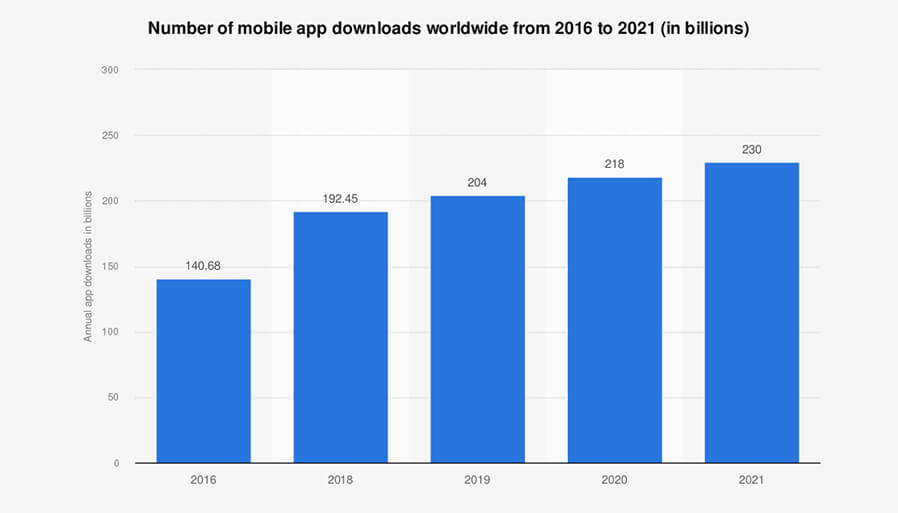
As per mobile app usage statistics data, the amount of annual app downloads is increasing per year, and it will continue to increase in the coming years. It is a great time to utilize this opportunity to enhance your business growth through a high performance and well-designed application. In order for organizations to attract, engage, and satisfy the needs of their target consumers, apps play a crucial role.
FAQs
What are the factors affecting the cost of mobile app development?
As with any other product, there are many factors that decides the development cost of an application. But the two significant factors that influence the mobile app development cost are features and functionality of the application and the developer charges.
What is included in the app development cost?
App development cost covers different aspects of an application such as:
- Type of application
- Platform on which it is implemented
- Location of user
- Location of development partner
- Features and functionality, etc.
What factors affect the Android app development cost?
Android app development cost is influenced by:
- Features and functionalities
- UI design
- App maintenance
- App development company
- Development time
Request a Quote
Categories
Popular posts
Best Practices for Software Product Engineering Every CTO Should Implement
2023-14-18How to Build Your Own On-Demand Carpooling App Services?
2023-08-25How to Start an On-Demand Fuel Delivery Business: A Comprehensive Guide
2023-07-28Empowering Miners: How Fleet Management Apps are Transforming the Mining Industry?
2023-07-21A Complete Guide to Develop a Food Delivery App for Restaurants in 2023
2023-07-08Mobile Apps Transforming the Travel Industry: A Game-Changer in Travel Planning and Experience
2023-07-07
